Regenerative Farming
Regenerative farming is based on five principles that need to be implemented together: no-till or minimal tillage, keeping the ground covered, species diversity, keeping living roots in the soil as much as possible, and integrating livestock.
Regenerative agriculture offers many benefits to the farming ecosystem such as increasing soil organic matter, carbon capture, greater water holding capacity, improved nutrient cycling, pest and disease suppression through enhanced soil biology, and ultimately higher nutrient density and health in our target crops.
An intriguing idea is the possibility of dry farming our vineyards which would have multiple benefits such as enhanced resiliency to climate change and potential increase in wine quality attributes. In our area we typically get 250-300 mm of rain/snow per year. If we can capture and store all this precipitation it is possible to grow grapes without additional irrigation. Furthermore by keeping plant cover present throughout the season we are able to capture dew as well. Thus by applying these principles we hope to be able to dry farm by 2025.
No Till or Minimal Tillage
For over 8000 years, humans have been plowing soils. The result: our precious tops soils are eroding and washing downhill into lakes, streams and oceans leaving behind nutrient poor degraded land. The historical record shows us that this process contributed to the fall of the Roman empire and collapse of the fertile crescent of Mesopotamia.
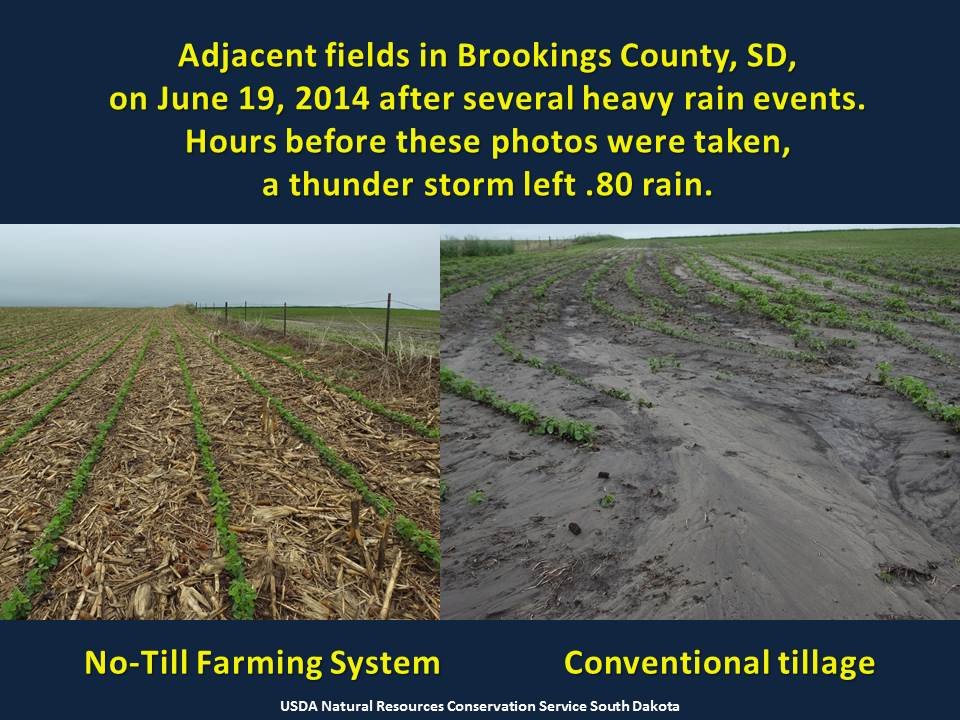
Minimizing tillage is challenging in organic agriculture as this is one of the only means to manage weeds. We have been adapting our systems and processes and have had good success in our vineyards, but it will take some time to adjust our other cropping systems. Interestingly the longer you leave a soil undisturbed the less weeds you have. Nature abhors bare soil and will attempt to cover it, thus if we do need tillage it is important to immediately plant species that we do want.
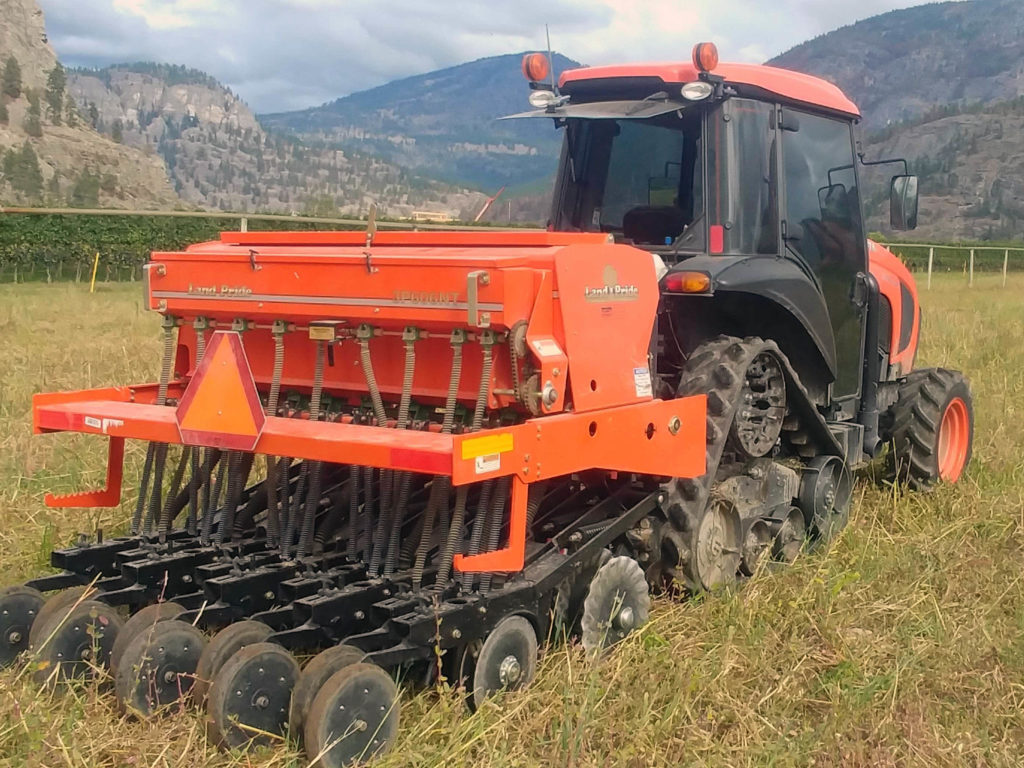
Pictured above is our 6 ft. wide no-till seeder that is designed to plant through the plant residue that we are now leaving on the soil surface. This particular model is perfect for us as it is narrow enough to pass down grape rows while still efficient for open field operations.
Keeping Ground Covered
A covered soil is cooler, allows water to infiltrate, reduces evaporation and allows the soil biology to do it’s magic by building the micro and macro pore spaces that allow for healthy water, nutrient and gas exchange.
This concept has led us to re-think what a healthy vineyard looks like. The conventional wisdom suggested that it’s important to keep a bare soil strip under the vines to maximize heat units and reduce competition from weeds. To achieve this requires large amounts of energy for tillage or herbicides in conventional vineyards. It also excludes the soil biology as a key player in a nutrient exchange with the vines. In our Okanagan summers, bare soil surface temperatures can exceed 50C killing off any worms, fungi or bacteria.
Putting this concept to the test over the last three seasons has yielded progressively better results. Vine health and vigour have improved with under-vine companion plantings. Further still in 2020, we had 40% higher yields, excellent juice flavours and chemistry with lower seasonal degree day accumulations vs the two prior years. The apparent paradox is explained by the covered soil maintaining vigorous water and nutrient exchange throughout the season, whereas with bare soil there would be weeks during the hottest parts of the summer that the biology would be shut down leaving the vines struggling.
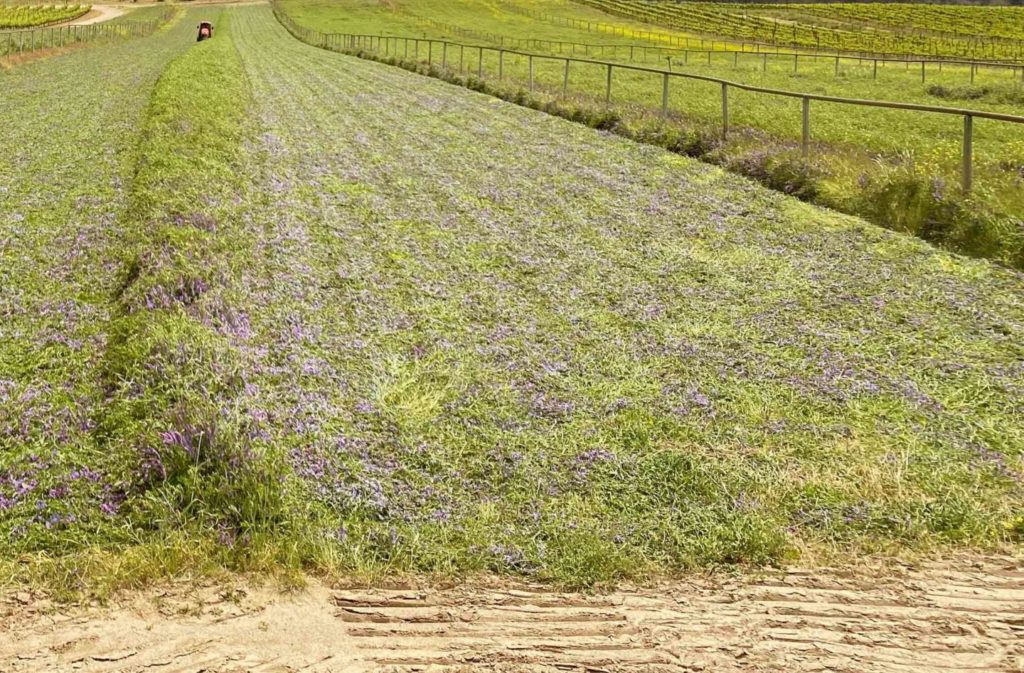
Pictured above is a freshly rolled field of hairy vetch (fixes nitrogen) and winter triticale (mobilizes phosphorus and other nutrients). Our farm made roller crimper is a water filled tank with bars every 8 inches that crimp the stems of the plants just prior to them setting seed. At this stage the plant will quickly desiccate and not be able to regrow. Conventional farms may use a herbicide to the same effect. With a living mulch in place we can plant another crop through the residue and have a good level of weed control and a source of nutrients as the mulch decays.
Species Diversity
Diverse crops create farm resilience. Over the decades and especially since converting to organic production in 2005 we have discovered that the greater diversity the fewer pest problems we have. Doubling down on this concept we have now included multi-species cover crops (7 – 15 species) to our vineyards and cropping fields.
Though we see the diversity of plants above ground it is the wealth of diversity below ground that truly powers the system through multi-dimensional synergies that self regulate the system. Plants span a number of functional groups that when combined are more efficient and can produce more biomass with increased drought tolerance.
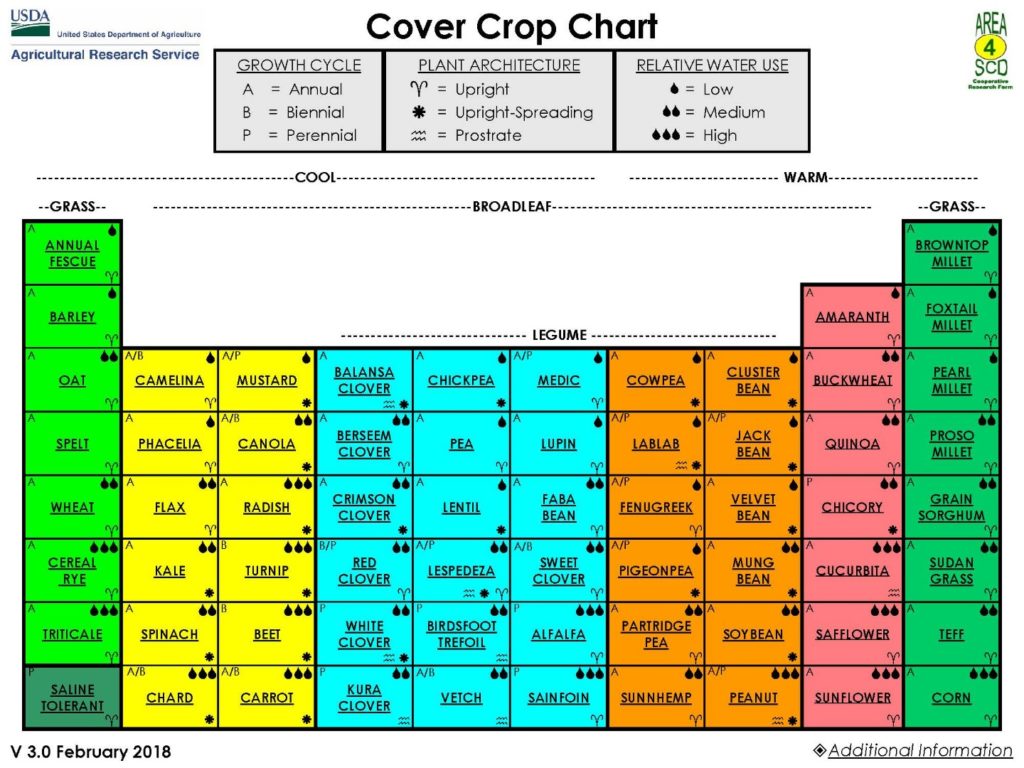
Pictured above (credit USDA) is an elegant visual of many common crops and their functional groups. Combining the functional groups with species adapted to your region helps to ensure good biomass production under a variety of weather conditions. Many of these mixes are excellent forages for livestock.
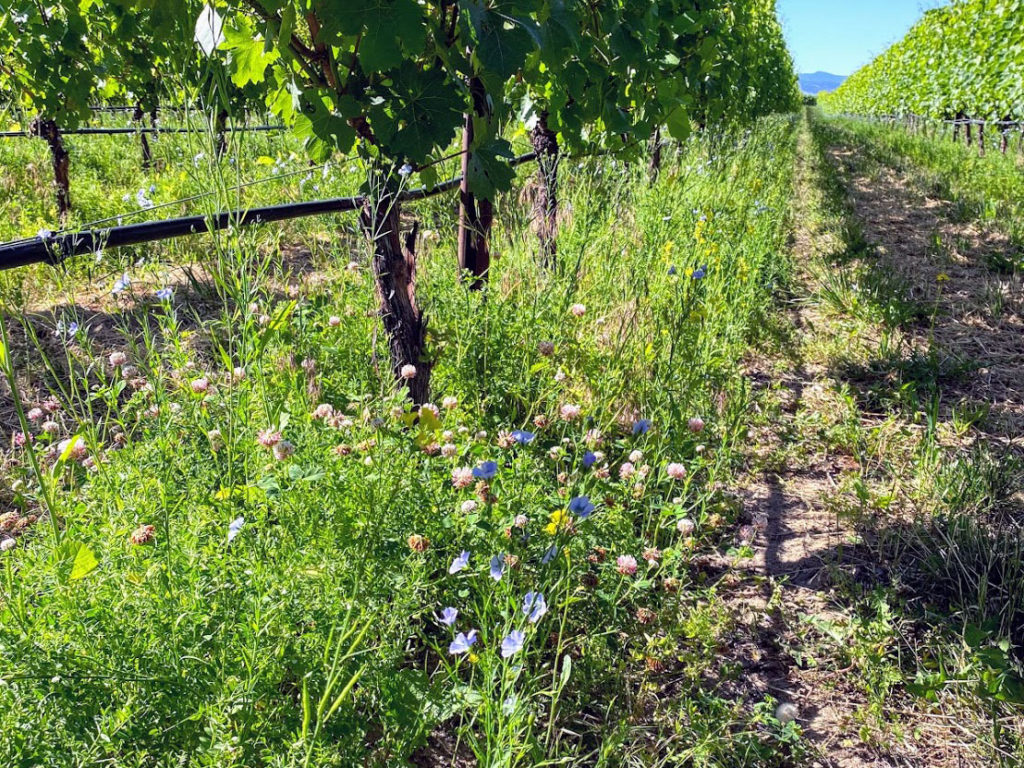
The above photo in our A15 Block shows both under vine plantings and drive row plantings. Each planting is helping to improve the functional environment of the vineyard.
Under vine we have planted Morton Lentils (cool season legume), Flax (cool season broadleaf), Oriental Mustard (cool season broadleaf), Phacilia (cool season broadleaf), Turnip (cool season broadleaf) and Teff (warm season grass). Volunteer species of clover (cool season legume) and downy brome (cool season grass). We have selected species that have a short growth height so as not to interfere with airflow and light to the vines, fix nitrogen for vine growth, have strong fungal associations to rebalance the soil population ratios of bacteria to fungi, pest control, pollinator habitat, cycle nutrients and store carbon.
In the drive rows are have no-till planted forage peas and oats into the existing grass sward to be roller crimped or mowed that the proper growth stage.
Living Roots
The biology in the soil, bacterial and fungus, are what drive the nutrient cycle, but they need energy. That energy comes from the photosynthesis of plants (which is free). Plants provide carbohydrates for the soil life, and the soil life provides key nutrients to the plants. (the oldest of the underground economies)
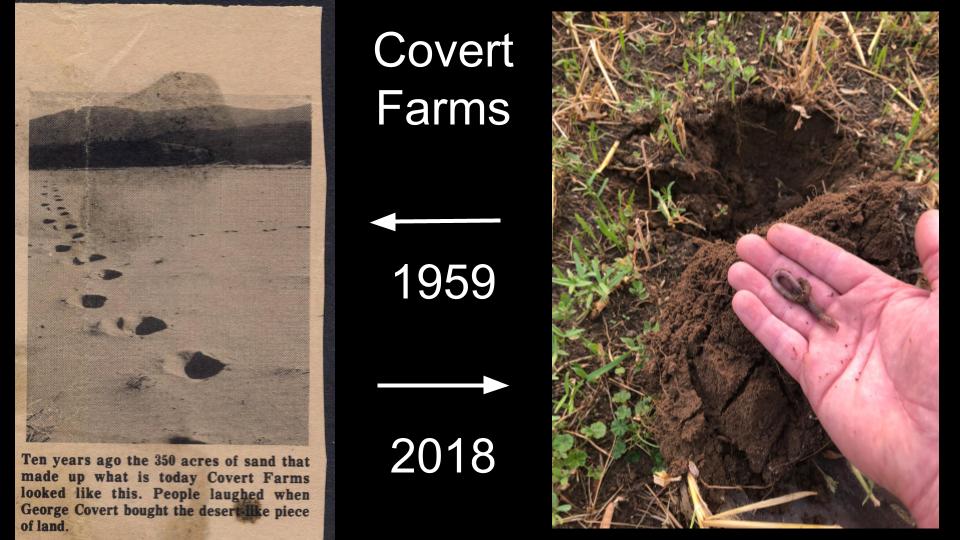
Pictured above is an example of the changes that can take place with proper soil management. It can be noted that most of the changes happened in the last decade as we moved to organic production and more recently adopted regenerative practices.
Integrating Livestock
As a society we have taken animals off the land and put them in feed lots. Concentrating their waste, polluting waterway and creating unhealthy conditions in which the animals need to be medicated to survive. The micro-biome of a ruminant is an incredibly powerful tool. Coupled to the micro-biome of the soil, agriculture can be regenerative, restore ecosystem function, increase nutrient density, capture carbon, and feed our growing population with healthy food.
Under Holistic planned grazing, desertification on farms and rangelands can be reversed.
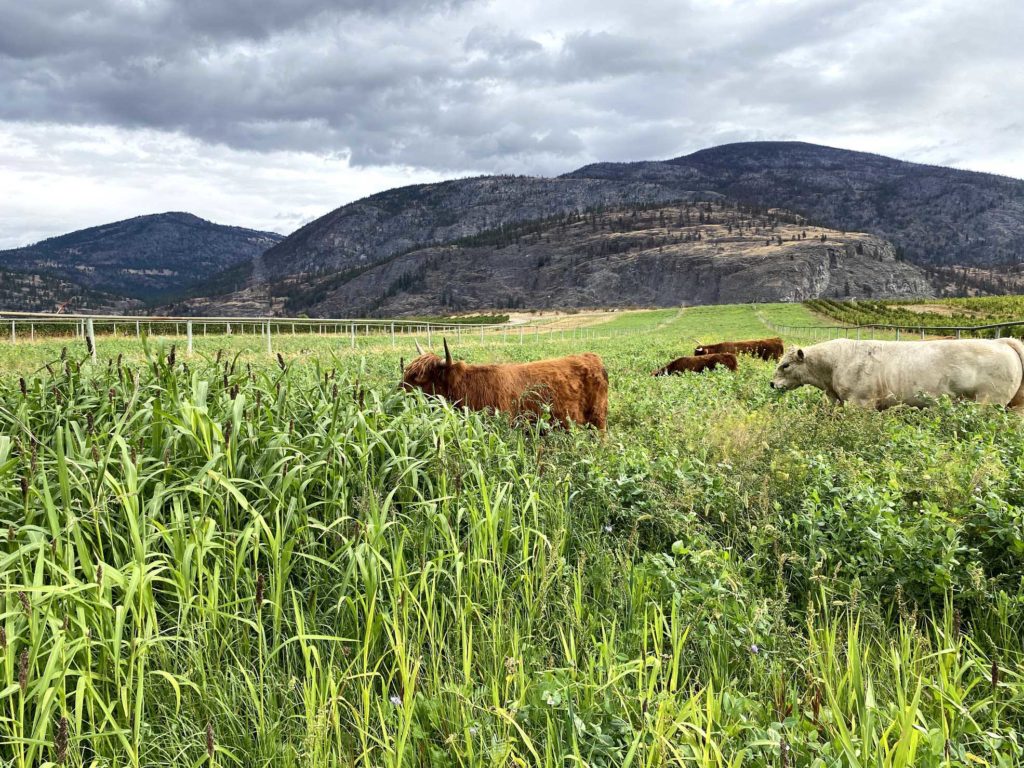
In the image above our herd is grazing a multi-species cover crop. Using electric fencing we can concentrate their impact and move them daily to maximize the benefit.
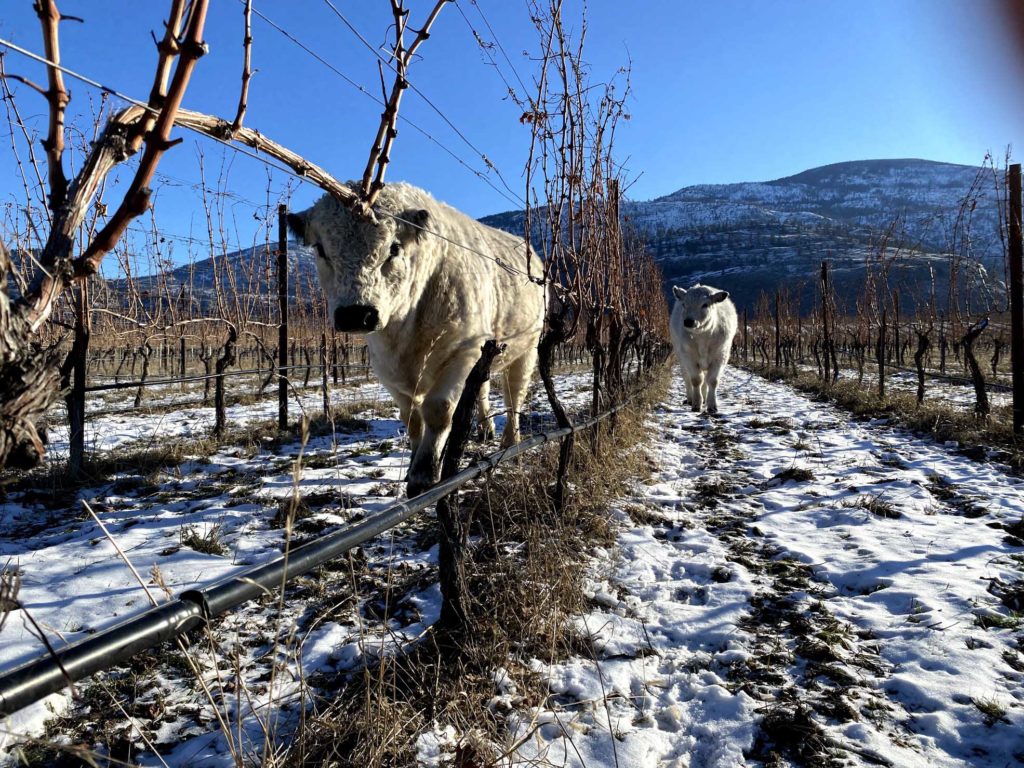
The under-vine and drive row cover crops in the vineyard are also selected as forage crops for winter stockpile grazing. The cows will “clean up” the vineyards and spread manure throughout. We typically get about 2-3 months of winter grazing with a herd of 25. This is added value to the vineyard in beef and nutrient cycling.
Further Reading
If you are interested in digging deeper into regenerative agriculture check out our blog for our research progress and farm updates.
Additional Resources
Dirt to Soil by Gabe Brown
For the Love of Soil by Nicole Masters
http://regenerativeagriculturepodcast.com/ by John Kempf
Growing a Revolution by David R. Montgomery
Holistic Management by Allan Savory and Jody Butterfield
Kiss the Ground by Josh Tickell
The One Straw Revolution by Masanobu Fukuoka
Stay in touch
Stay up to date with regenerative farm news, wine releases, events and special offers. We typically send out newsletters every quarter with small updates or offers monthly.